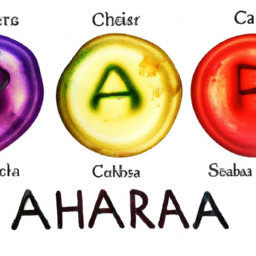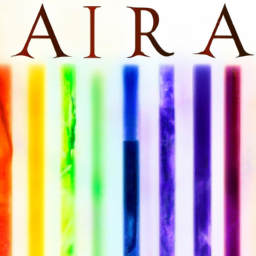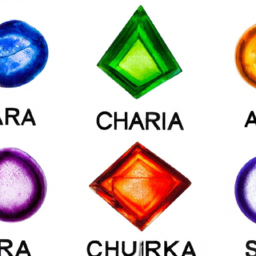
The : A Guide to Understanding Energy Centers within the Body
The human body is a complex network of physical and energetic systems. One of the most fascinating and long-standing beliefs in Eastern spirituality is the concept of the chakra system, which refers to the seven major energy centers in the body. The word “chakra” is derived from the Sanskrit word meaning “wheel” or “circle,” and is believed to be the key to understanding the flow of energy within the body.
Chakras are not a new concept; they have been referenced in ancient Hindu and Buddhist texts for thousands of years. However, it wasn’t until the 1920s that the chakra system gained popularity in the Western world, thanks to the work of psychoanalyst Carl Jung and author and mystic Alice Bailey. Today, the chakra system is widely used in holistic healing practices, yoga, and meditation.
The Seven Main Chakras
The chakra system is composed of seven main energy centers, each corresponding to specific physical, emotional, and spiritual functions. These chakras are located along the spine, from the base of the spinal column to the top of the head. Each chakra is associated with a particular color, element, and sound vibration.
1. Root Chakra (Muladhara) – This is the first chakra, located at the base of the spine, and is associated with the color red, the element of earth, and the sound “Lam.” It represents our sense of stability, grounding, and physical needs.
2. Sacral Chakra (Svadhisthana) – Located in the lower abdomen, the second chakra is associated with the color orange, the element of water, and the sound “Vam.” It governs our emotions, creativity, and sexuality.
3. Solar Plexus Chakra (Manipura) – Located in the upper abdomen, this chakra is associated with the color yellow, the element of fire, and the sound “Ram.” It represents our personal power, self-esteem, and willpower.
4. Heart Chakra (Anahata) – Positioned at the center of the chest, the heart chakra is associated with the color green, the element of air, and the sound “Yam.” It governs love, compassion, and relationships.
5. Throat Chakra (Vishuddha) – Located at the throat, this chakra is associated with the color blue, the element of sound, and the sound “Ham.” It governs communication, self-expression, and truthfulness.
6. Third Eye Chakra (Ajna) – Located between the eyebrows, the third eye chakra is associated with the color indigo, the element of light, and the sound “Om.” It represents intuition, wisdom, and spiritual awakening.
7. Crown Chakra (Sahasrara) – Located at the top of the head, the crown chakra is associated with the color violet or white, the element of thought, and the sound “Ohm.” It represents our connection to the divine and higher consciousness.
Understanding the Chakra System
The chakras are not physical entities; they are energy centers that are thought to interact with the physical, emotional, and spiritual aspects of our being. When in balance, the chakras spin and vibrate at a healthy frequency, allowing for the free flow of energy. However, when one or more chakras are blocked or imbalanced, it can lead to physical, emotional, or spiritual issues.
This is where practices like yoga, meditation, and energy healing come into play. These practices aim to unblock and balance the chakras, allowing for the harmonious flow of energy throughout the body. By doing so, individuals may experience improved physical health, emotional well-being, and a deeper connection to their spiritual essence.
Signs of Chakra Imbalance
There are a few ways to determine if your chakras may be imbalanced. Physical symptoms, such as chronic pain, digestive issues, or tension in certain areas of the body, may indicate an imbalance in a particular chakra. Emotional signs, such as feeling disconnected, anxious, or lacking self-confidence, could also be a red flag for a blocked chakra. Additionally, spiritual crises, lack of purpose or direction in life, and difficulty making decisions are all potential signs of an imbalanced chakra system.
Bringing Balance to Your Chakras
If you suspect your chakras may be imbalanced, there are various ways to bring harmony to your energy centers. These include healing modalities such as reiki, acupuncture, and sound therapy. Yoga poses, breathwork, and meditation can also help open and balance the chakras, allowing for the free flow of energy. Additionally, incorporating affirmations and practicing self-care can support chakra balancing on a daily basis.
Final Thoughts
The chakra system is a powerful tool for understanding and improving our overall well-being. By becoming familiar with this ancient concept and incorporating practices to balance the chakras, we can promote physical health, emotional balance, and spiritual growth. The chakra system provides a framework for connecting mind, body, and spirit, guiding us on a journey of self-discovery and inner transformation.





Such an interesting topic!
#ThisIsInteresting – A great resource for learning more about the chakra system!